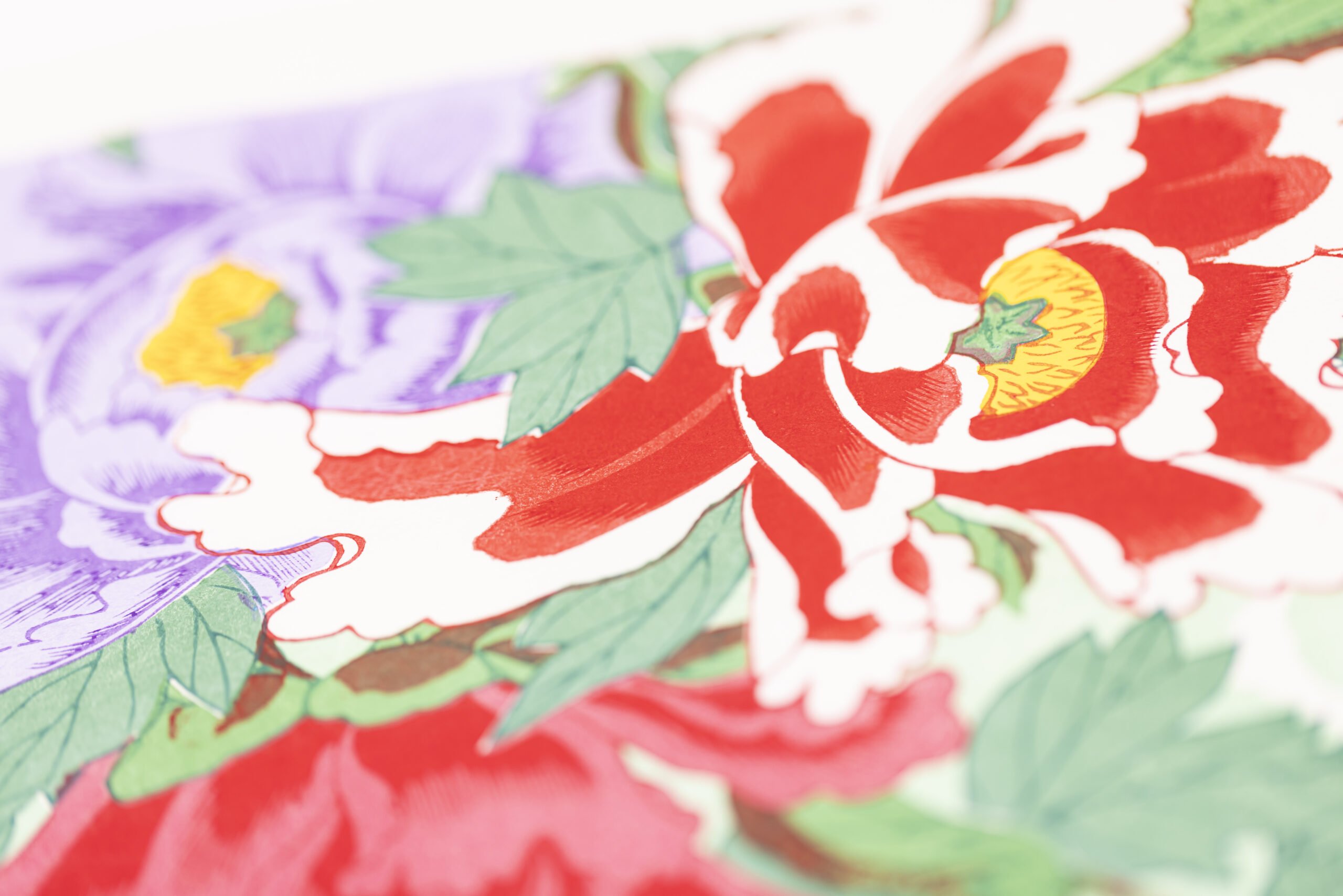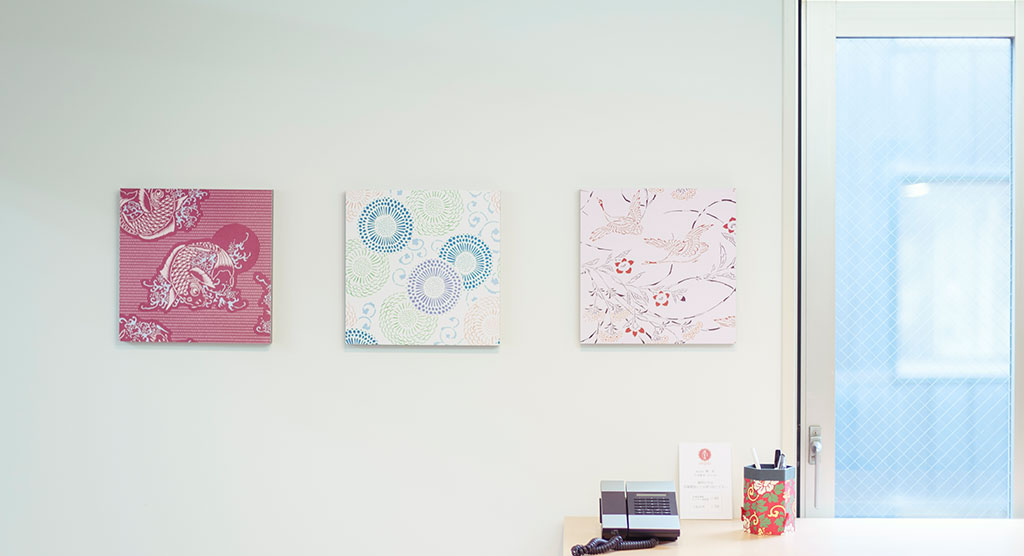Table of Contents
- What is the identity of eye-catching artwork displayed in the store?
- “Haibara woodblock print artwork project” revives 200 years of techniques and vivid colors.
- Artworks born from the skillful techniques of craftsmen such as washi craftsman, painter, engraver, and printer.
- It is getting more attention not only from Japanese customers but also from overseas customers.
What is the identity of eye-catching artwork displayed in the store?
You may fall in love with it at first sight.
I met up with my friend Kanako at Haibara’s store in Nihombashi to help her choose a present for her parents.
Kanako’s parents are going to be based in Tokyo and Nagano from next year. They plan to stay at their house in Tokyo on weekdays, and then on weekends and long vacations, stay at the second house in Nagano, which they newly purchased for getting in touch with nature.
“I want to give them something that will make their daily life exciting. But, choosing the gift is quite difficult,” Kanako said. No problem. Leave it to me. In Haibara, they have a wide range of beautiful and comforting items that will add color to our daily life.
“Wow, the store’s exterior and design are also very nice.”
Haibara’s store is a modern and stylish building covered with “3D tile bricks” which combines traditional and modern technologies based on the motif of the “colored glass” pattern of washi paper. As soon as Kanako stepped into the store passing through the curtain with “Gampi paper, Haibara” written on it, stopped abruptly. She was staring at a painting displayed in front of her.
The painting was a woodblock print artwork titled “Peony” by Kyosai Kawanabe, a Japanese artist active during the late Edo period and the beginning of the Meiji period.
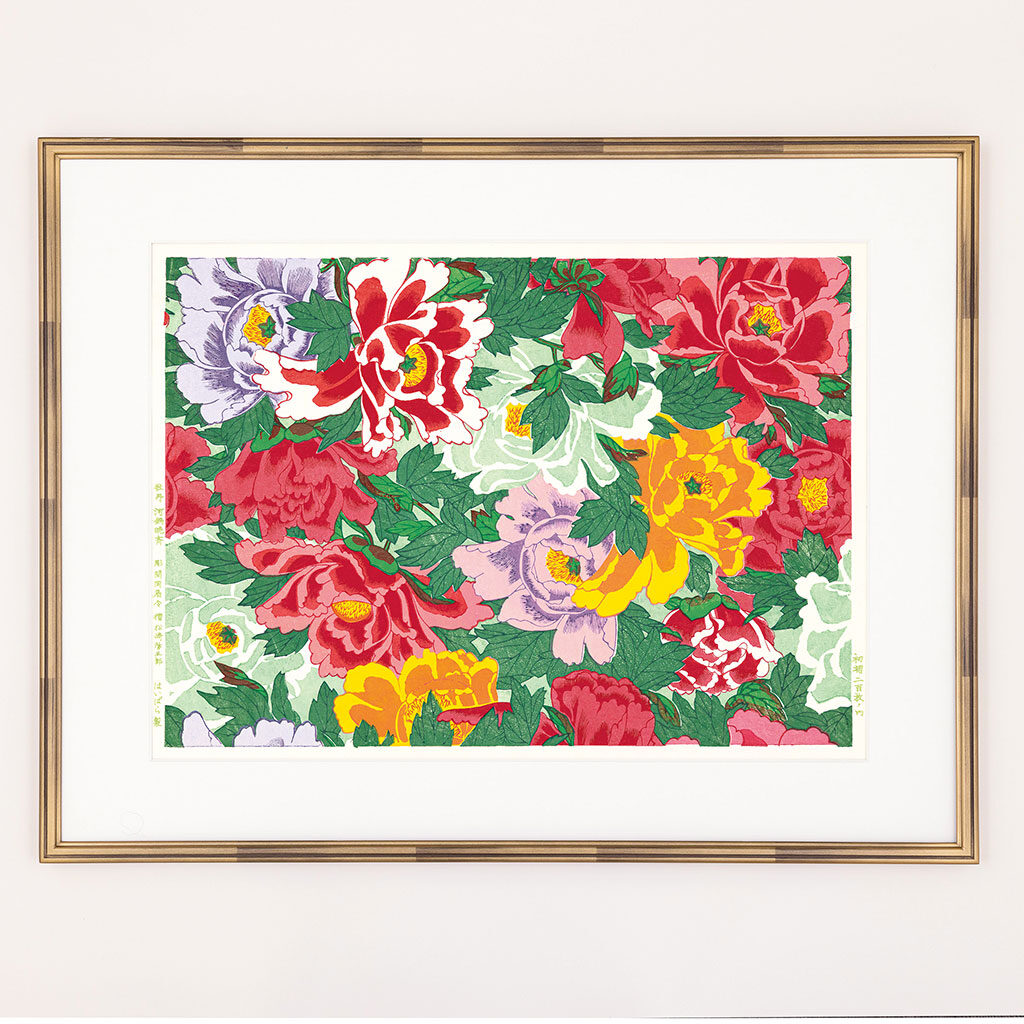
“Haibara woodblock print artwork project” revives 200 years of techniques and vivid colors.
Haibara is currently focusing on a sustainable initiative called “Haibara woodblock print art project,” which aims to bring the 200-year-old traditions and techniques of the store’s founding back to the modern age.
The “Peony” that Kanako has been gazing at is also a masterpiece born from this project. Perhaps Kanako’s enthusiasm was conveyed as she immersed herself in the world of the work, a store staff came up to her and gave her an easy-to-understand explanation of the process of making a woodblock print art painting.
“Woodblock prints are made through the cooperation of the handwork by various craftspeople. First, a specialized craftsman makes washi which is suitable for woodblock print. Next, an engraver carves woodblocks for each color based on a design drawn by a painter. Finally, the printer applies pigments one by one to each color, finishing each piece by hand.
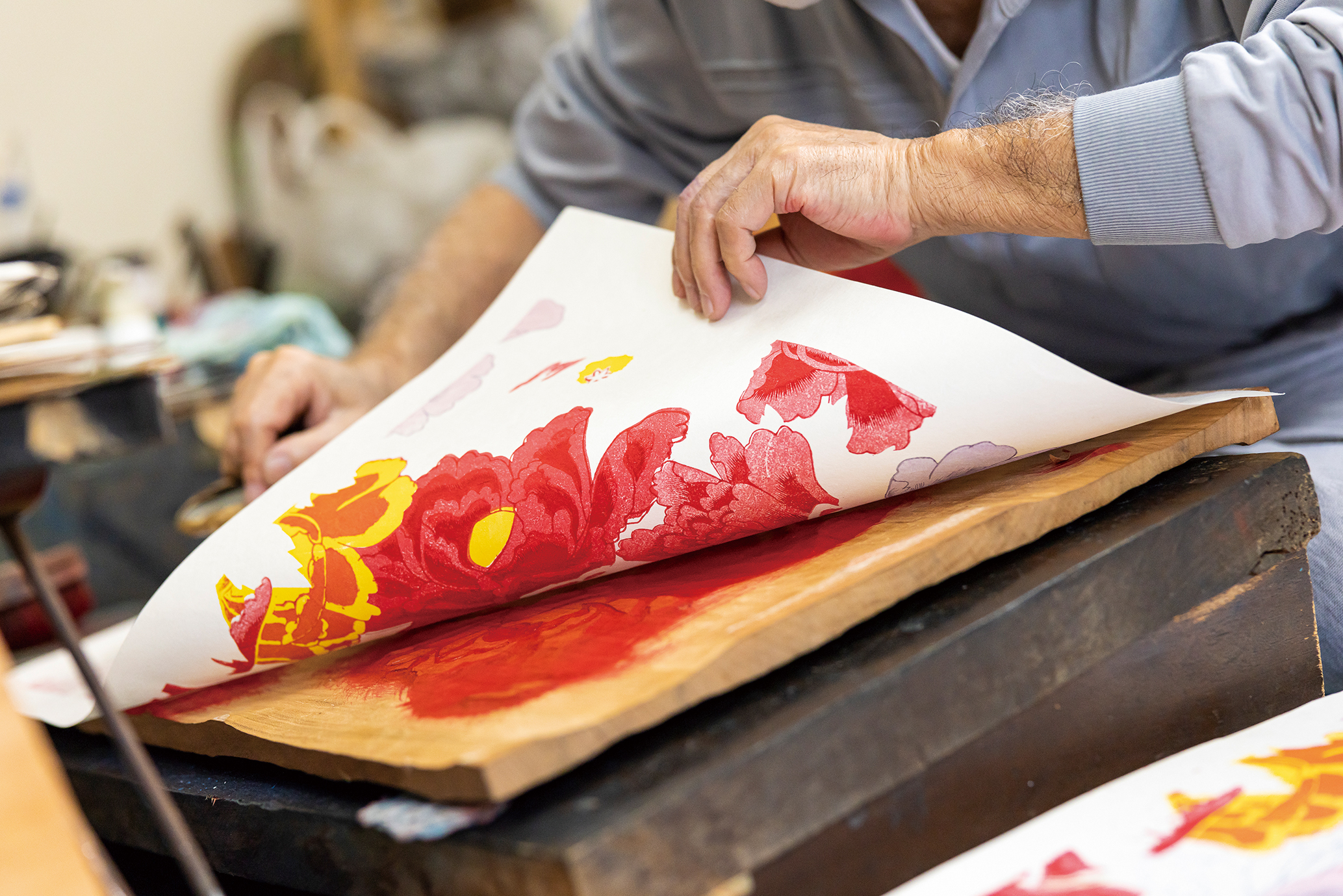
Artworks born from the skillful techniques of craftsmen such as washi craftsman, painter, engraver, and printer.
The paper used for “Peony” is called “Echizen Kizuki Hosho,” made in Echizen City, Fukui Prefecture. It is made from 100% kozo (paper mulberry), which is characterized by its thick and long fibers, and is suitable for woodblock prints. After being carefully handmade by craftsman, each sheet of paper is stretched over a board made from ginkgo tree and allowed to dry, resulting in paper with supple strength and a soft texture.
Next comes the engraver. The woodblock used for this artwork is wild mountain cherry, which has a fine grain and is highly processable. The wood is carefully carved based on Kyosai’s draft of the woodblock, using various types of knives and chisels of different sizes, while checking the direction of the knots and grain. The design of “Peony” has 14 colors in total, so the artist carved as many as 15 woodblocks, including the blank panels. This work requires a high level of skill to bring back to life the delicate texture of the brush strokes on the woodblocks.
Once the woodblocks are finished, it is a printer’s turn. By spreading pigment on each of the 14 woodblocks and carefully rubbing it onto the paper, layering the colors to complete the work. The technique is the same as in the Edo period (1603-1867), but the color saturation is adjusted to suit modern times, and the artist is very particular about the vividness and beauty of the colors. “Peony” does not have black outlines that depict the entire composition. Therefore, there are no clues for overlapping the color plates exactly at the same position, so the printer has to go through a trial-and-error process to achieve a high degree of difficulty in the printing process.
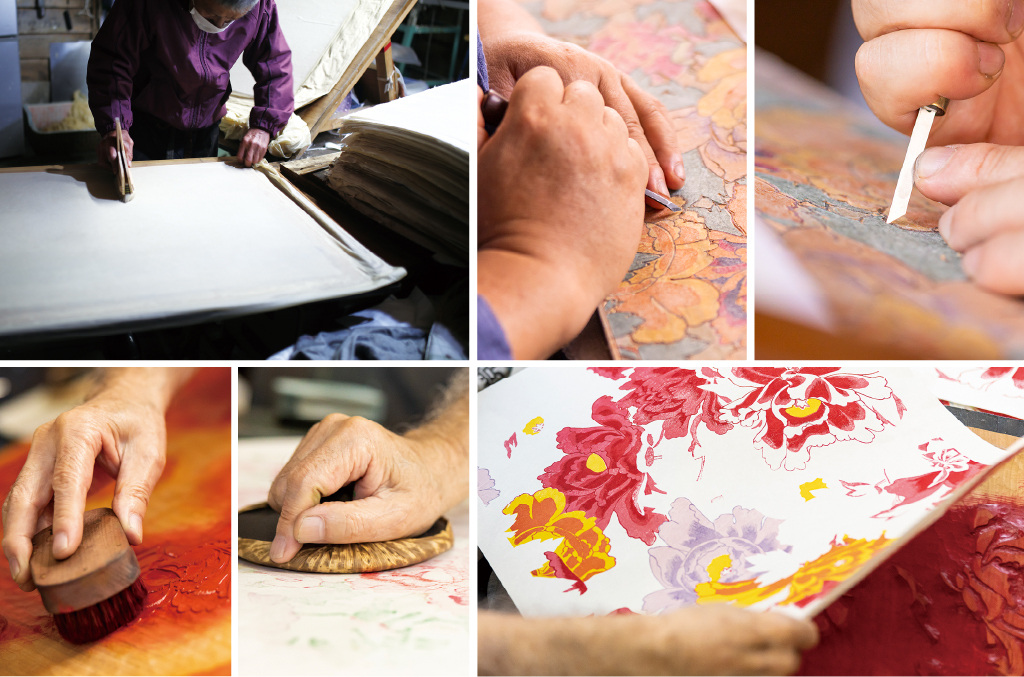
It is getting more attention not only from Japanese customers but also from overseas customers.
“Haibara woodblock print art project” reprints a series of attractive designs by artist such as Kyosai Kawanabe and Korema Shibata.
At Haibara’s storefront, not only my friend Kanako but also many other customers stopped in front of the “woodblock print artwork” and showed great interest in them.
The techniques handed down from the Edo period, the beauty of colors unique to woodblock printing, and the richness of expression created by the delicate handiwork of the artists all attract people from different countries and generations. According to the staff, inquiries from not only Japanese customers but also from overseas customers have been increasing in recent years.
Kanako, who fell in love with a “woodblock print artwork” at the Haibara storefront, pooled her money with her sisters and gave “Peony” to her parents as a gift.
The parents immediately displayed “Peony” on the wall of their living room and are now enjoying the richness of their daily lives brought about by the beautiful woodblock prints.















 Instagram
Instagram facebook
facebook X(旧Twitter)
X(旧Twitter) Youtube
Youtube note
note